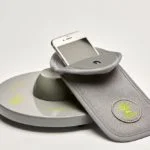
How to Limit Screen Time using Non-Digital Solutions
Why do parental controls have to be so complicated?!
- We are not smart enough! It sometimes seems one needs to have a PhD in Information Technology to configure parental controls settings on various systems. With technology changing every day, new apps and devices invading our lives, kids discovering new addictive screen time pastimes and loopholes to existing parental controls, how can we keep up with it all?! Plus, our little “digital natives” are smarter than us, and are always one step ahead of our efforts to protect them from themselves.
- We do not have time! Screen time management in all its complexity is turning into a full-time job, and parents are crazy busy with multiple work and family obligations – and also frazzled by the exponentially growing number of digital tasks to attend to, like their own email and social media.
- We don’t have the money! Many parental controls solutions require either a large initial investment into a hardware of some sort, a monthly subscription payment to a screen time management software, or both.
Below we gathered a collection of innovative gadgets that are not an app but can assist parents in the screen time management battle.
Some innovative gadgets to help manage screen time
Dumb phone
Turning off features on a regular smart phone to make it “dumb” is an option, but it leaves kids with the temptation to figure out how to turn them back on. Kids are smart and more tech-savvy than parents – they will find a way.
An old-fashioned flip phone does only two things – calls and texts – before kids are ready for the danger and responsibility that comes with access to open Internet. Wait Untill 8th campaign empowers parents with information to delay getting children a smart phone until they are at least in 8th grade.
The only problem – these phones do not look “cool”. Older versions of touch-screen non-smart phones, some with a slide-out Qwerty keyboard are an option, as well as innovative products like the Gabb phone, that looks exactly like a smart phone (and thus preserves kids’ social standing), but does not have Internet, social media, or apps.
Just calls and texts. And a GPS to track the location of your kids from your smartphone. My kids have Gabb phones, and I am not planning to exchange them for smartphones until at least the age of 16.
Get $25 off GABB phone with promo code: TECHDETOX

Yondr pouch
The phone is placed in a Yondr case. The case locks with a special magnetic lock. To access the phone, the user must tap it on unlocking base. Makes schools, concerts, parties, conferences and other public events into spaces where people actually pay attention to what’s going on instead of looking at their phone. Brilliant.
Kitchen Safe
A time-locking “cookie jar” can be used for phones and tablets. Once the timer is set, and the button is pressed, the safe will remain locked until the timer reaches zero. No other choice but to wait until the phone is out of timeout.
Phone Jail
Cell Phone Lock-Up Cage for teachers to use in the classroom, parents to use during dinner or family time, or to use personally for your cell phone timeout. A responsible adult retains the key until “jail time” is over.
A cute psychological “hack” to the problem of keeping phones in the bedroom, disrupting sleep and ruining mornings. Put the phone in its own “bed” in another room, and plug it in to charge.
Security safe
When all else fails, or if your child is really difficult, nothing stops you from locking all tech (phones, tablets, laptops, gaming consoles, TV remotes, etc.) in an industrial-grade steel safe. These can only be opened by a parent who knows the combination to the lock. Or a sledgehammer.
A question of physically securing the router was asked by a tech-savvy dad who set up a router with parental controls but still discovered that his (also tech-savvy) teen found ways to circumvent the settings. A plastic lockbox should not interfere with a WiFi signal.
Best Non-Digital Solutions
Self-Control
The best – and free – solution to the problem of excessive screen time is good old SELF-CONTROL. Self-control is the parental controls software we wish our kids were able to download into their brains. The prefrontal cortex of the brain is the hardware designed by nature to house that self-control. The only problem is that this hard drive is not biologically ready until the age 25 or so. It’s unrealistic to expect teenagers to rely a 100% on something that is still under construction.
Especially when this immature and vulnerable self-control is up against a multi-billion digital media industry that specifically designs its products to be as addictive as cocaine to power increasingly competitive attention economy. This money-making machine is optimized for maximum screen time, which translates to maximum profits. Humans of all ages are seen as a resource to be exploited, with valuable limited attention to be extracted at all costs. Kids’ and teens’ physical and mental health, academic performance, career prospects, relationships, sleep, and rates of depression and suicide are not a concern for video games and social media developers.
Our kids have no chance against the power of addictive technology. Until they grow up, their self-control mechanism needs to be external, to give the brain the time to develop. They need our help.
Parenting
Which brings us to the next best non-digital solution – parenting. Much had been written about parenting around technology. The bottom line: parenting strategies, setting expectations and boundaries, building healthy media habits – cannot be outsourced to a third-party parental controls product. Parents still need to do the hard work required to raise children as well-rounded human beings.
Screen time management solutions are just parents’ helpers.







